How to Connect a USB Printer to a Network
Connect to the router on Windows

Find the USB port on the router. Not all routers support USB connections. Most high-end routers feature USB connectivity. If your router does not support USB, we need to buy an additional print server to connect the printer to the network.
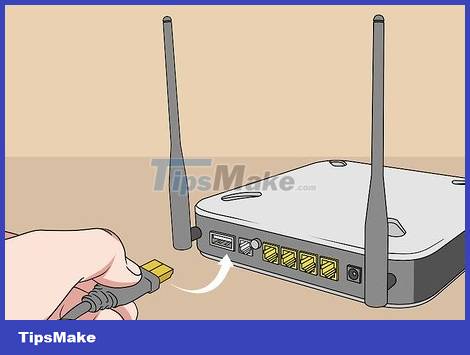
Connect the printer to the USB port on the router. If your router has a USB port, you can easily connect the printer through it.
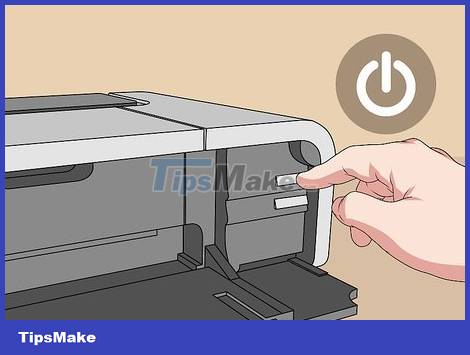
Turn on the printer and wait 60 seconds. If the printer is not ready, you need to plug the power cord into a wall outlet or wall outlet. Then, turn on the printer and wait 60 seconds for the router to recognize the device.

Turn on the router's printer sharing feature. To enable printer sharing on your router, open a web browser and enter the router's IP address in the URL bar (usually 192.168.0.1, 192.168.1.1, 10.0.0.1 or similar). Then, proceed to log in to the router. The router's firmware installation screen will appear. Look for the USB menu, enable USB printer support or Printer Server mode, and save the settings. Each router has a different firmware settings screen and login method.
Consult the user manual or technical support for your specific router to learn how to log in and enable Print sharing mode, as some routers may not support this. If you can't find Print sharing, you may need to buy an external printer server.

Click the Start icon on Windows. The Start button has the Windows icon and is located in the lower left corner of the taskbar by default. You need to make sure you are using a computer connected to the router.

Enter Printers. The "Printers & Scanners" settings option will appear at the top of the Windows Start menu.
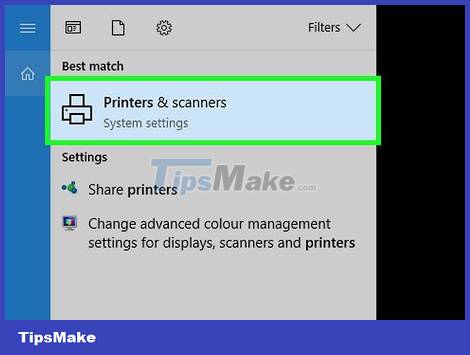
Click Printers & Scanners . This option appears at the top of the Windows Start menu. The Printers & Scanners menu opens.
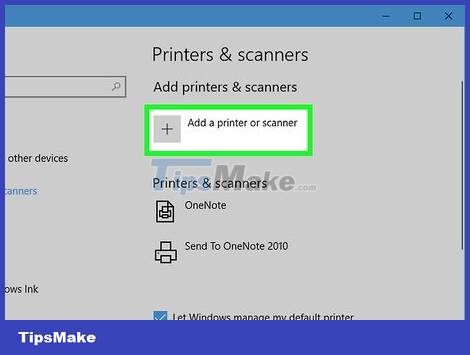
Click Add a printer or scanner . Windows will scan available computers. Chances are your computer won't detect the printer you want.
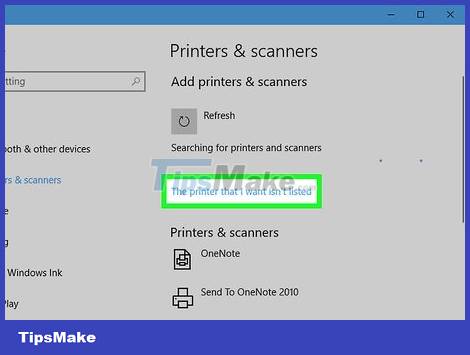
Click The printer that I want isn't listed . This option appears after Windows has finished scanning for nearby printers.
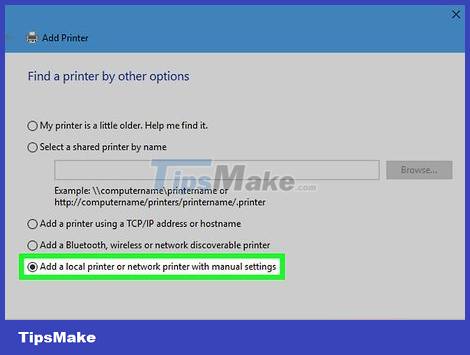
Select "Add a local printer or network with manual settings" and click next . This option is at the bottom of the "Find a printer by other options" menu. Click the radio button for this option and then click "Next" in the lower right corner of the menu.

Select "Create a new printer port". This is the second option in the "Choose a port" menu. You need to click the radio button to select.
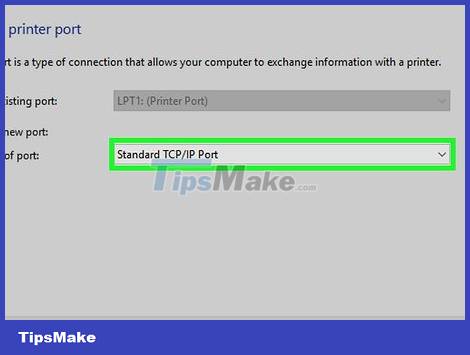
Select "Standard TCP/IP" and click Next . Use the drop-down menu next to the "Type of port" heading and select "Standard TCP/IP", then click "Next" in the lower right corner.
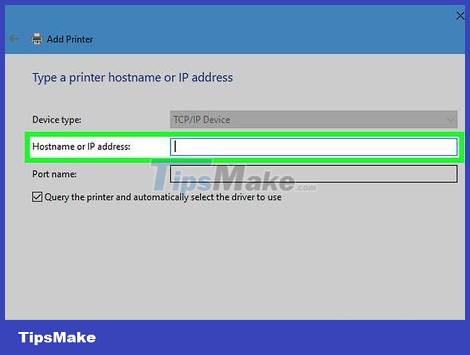
Enter the router's IP address and click Next . Enter the IP address you used to log into the router in the bar next to the "Hostname or IP address" heading. The port name can be anything. Once you've entered, click "Next" in the lower right corner. Windows will begin the port checking process.
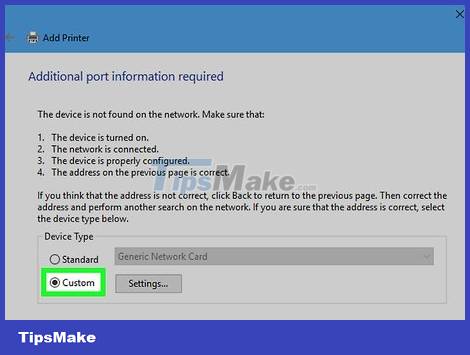
Select "Custom" and click Next . The custom portal will be created with default settings. Once you're done, click "Next" in the lower right corner.
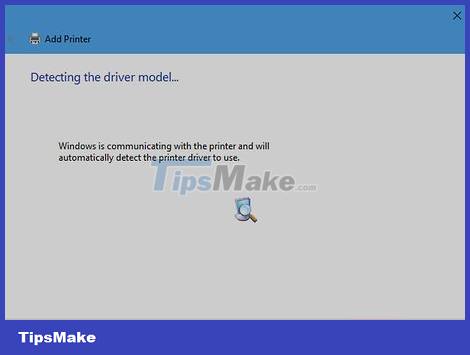
Install the printer driver and click Next . After you add the custom port, a window will pop up to install the printer driver. You can select the printer brand in the box on the left and the printer model in the right. If you have a printer driver installation CD, insert it into your computer and click the "Have disk" button.
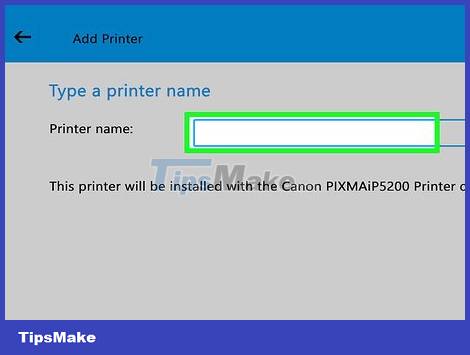
Enter a name for the printer and click Next . You can add the printer name by typing it in the bar next to the "Printer name" heading, or you can leave it as default and click the "Next" button in the lower right corner.
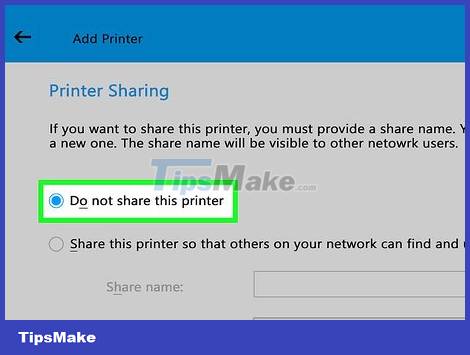
Select "Do not share this printer" and click "next". So the printer has been set up. You can now click "Print a test page" to make sure the printer works, then click "Finish."
Repeat steps 5-17 for all Windows computers on the network that you want to grant printer access to.
Connect to the router on Mac
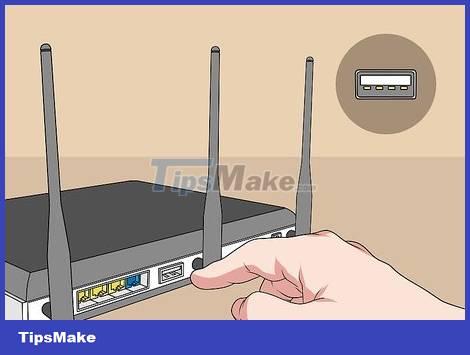
Find the USB port on the router. Not all routers support USB connections. Most high-end routers feature USB connectivity. If your router does not support USB, we need to buy an additional print server to connect the printer to the network.
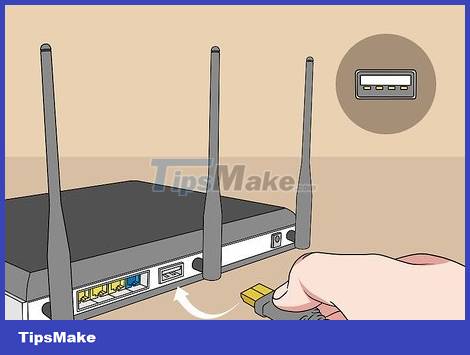
Connect the printer to the USB port on the router. If your router has a USB port, you can easily connect the printer through it.
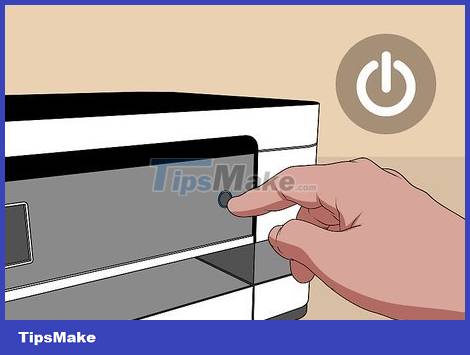
Turn on the printer and wait 60 seconds. If the printer is not ready, you need to plug the power cord into a wall outlet or wall outlet. Then, turn on the printer and wait 60 seconds for the router to recognize the device.
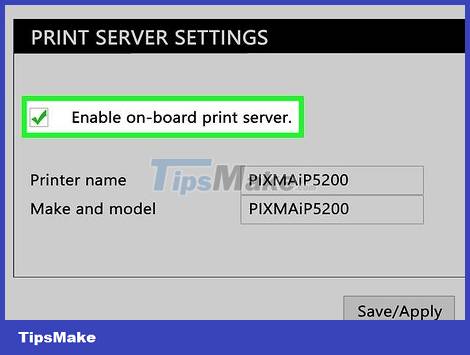
Enable printer sharing with the router. To enable printer sharing on your router, open a web browser and enter the router's IP address in the URL bar (usually 192.168.0.1, 192.168.1.1, 10.0.0.1 or similar). Then, proceed to log in to the router. The router's firmware installation screen will appear. Look for the USB menu, enable USB printer support or Printer Server mode, and save the settings. Each router has a different firmware settings screen and login method. Refer to the user manual or technical support for your specific router to learn how to log in and enable printer sharing mode. Some routers may not support the Print sharing feature. If you can't find this part, you may need to buy an external printer server.
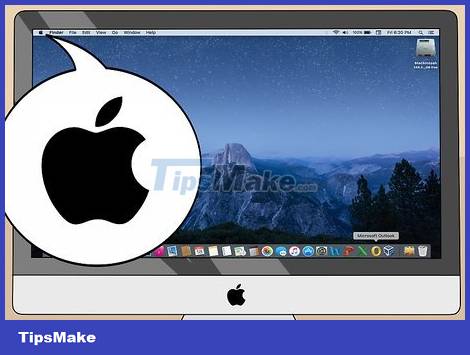
Click the Apple icon located in the menu bar at the top of the screen. The Apple Menu opens.
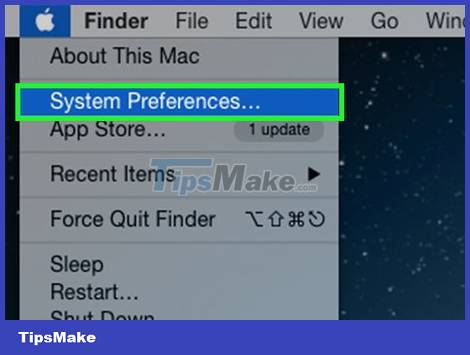
Click System Preferences . This option is located second in the Apple Menu. The System Preferences screen opens.
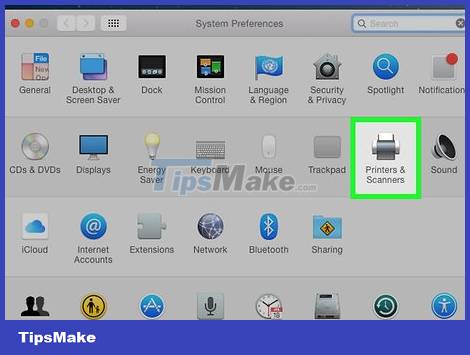
Click the Printers & Scanners icon . This option has a printer icon.

Click the + sign to add a printer. This button is located below the printer list pane on the right side of the "Printers & Scanners" window.
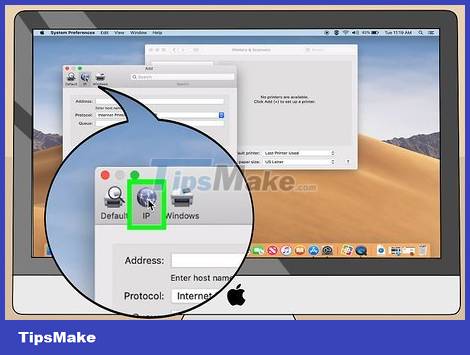
Click the IP tag with the blue globe icon at the top of the window.
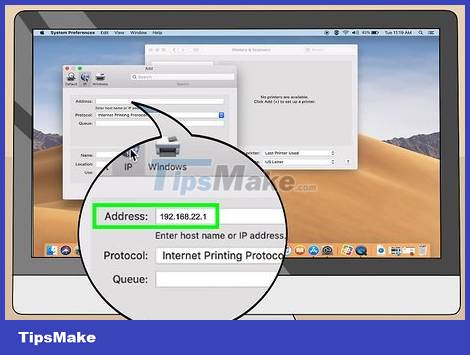
Enter the router's IP address in the "Address" line. This is the first bar on the window. Enter the IP address you used to log in to the printer.
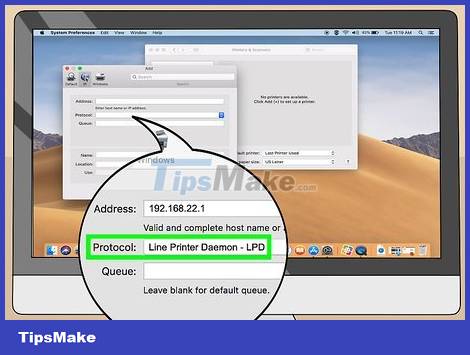
Select "Line Printer Daemon" next to "Protocol". The "Protocol" drop-down menu is below the address bar. Click on it and select "Line Printer Daemon".
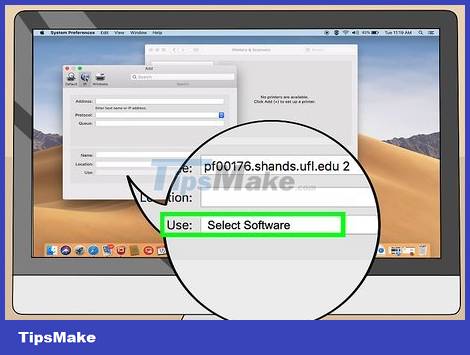
Select "Select Software" next to "Use". Click the drop-down menu next to "Use" to select "Select Software". A list of available printer software will appear.
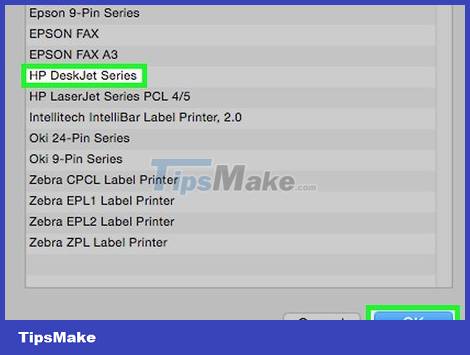
Select the current printer manufacturer and model and click Ok . Enter the printer brand name in the "Filter" search bar, select the printer model number from the list, then click "Ok".
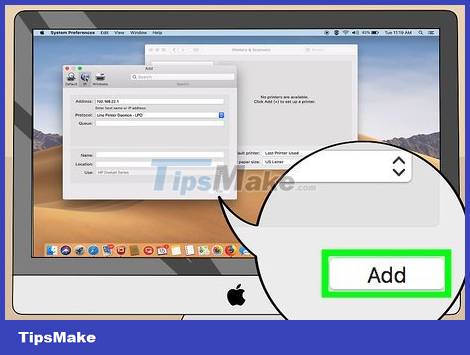
Click Add in the lower right corner of the "Add" window. The printer driver will be installed, you will be able to add this printer to perform wireless printing using the router.
Repeat steps 5 -14 on all Mac computers on the network to grant printer access.
Use print server
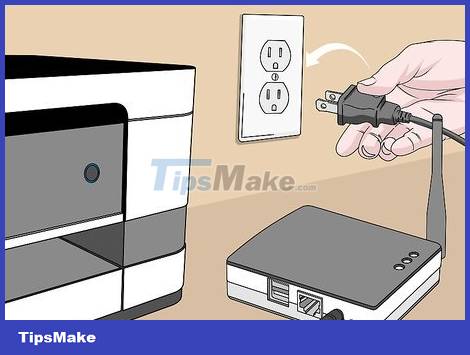
Plug in the printer server. This device has a similar shape to a router. You need to choose a print server power location somewhere close to the printer and router.

Connect the printer to the print server. Use the USB cable connected to the printer to plug into the print server.
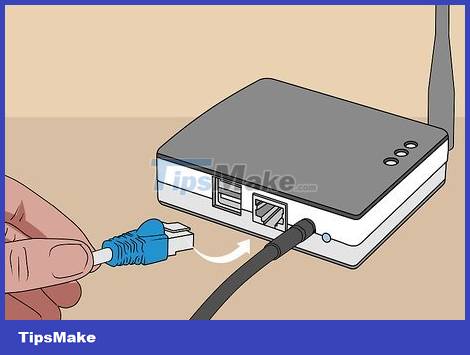
Connect the printer server to the router. Here are a few ways to connect the printer server to the router:
Using an Ethernet cable : You can connect the printer server to the router using an Ethernet cable. In fact, some wireless printer servers may require a wired connection during setup.
Use a wireless connection : If the printer server has a "WPS" or "INIT" button, you can connect wirelessly to the router by turning on the print server, pressing the "WPS" button on the router, and then quickly Press the printer server's "WPS" or "INIT" button.
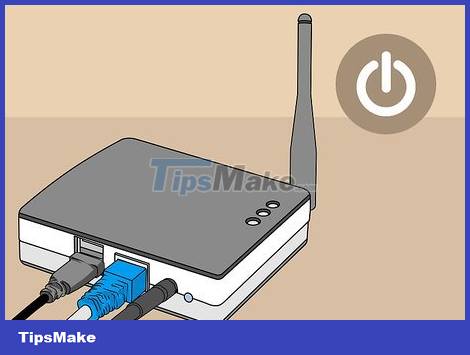
Turn on the printer server. If the device is off, turn on the switch or press the power button to turn on the printer server.
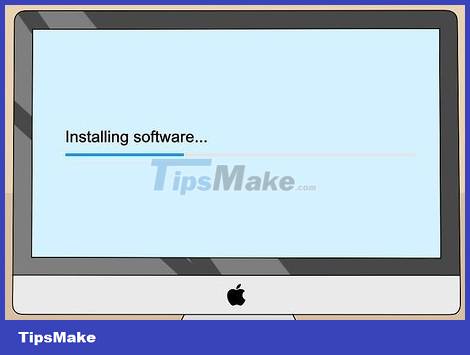
Install the printer server software. Normally, the printer server will come with a CD containing the device installation software. This software can also be downloaded from the manufacturer's website. Use this CD to install the print server software on all computers on the network that you want to authorize to use the printer. Just insert the CD into the disc tray and launch the installation program. The installation process will vary depending on the printer server model. The installation program on the CD will guide you through the process of connecting to the printer and establishing a Wi-Fi connection (for wireless print servers). You may need to provide a Wi-Fi password to connect the wireless printer server to the network. Once completed, perform a test print to make sure the setup was successful.
 How to Add an HP Printer to a Wi Fi Network
How to Add an HP Printer to a Wi Fi Network How to fix Windows cannot connect to the printer error, cannot connect to the printer
How to fix Windows cannot connect to the printer error, cannot connect to the printer Steps to connect the printer to the computer
Steps to connect the printer to the computer Instructions on how to connect the printer via wifi
Instructions on how to connect the printer via wifi How to fix Windows errors not connected to the printer
How to fix Windows errors not connected to the printer